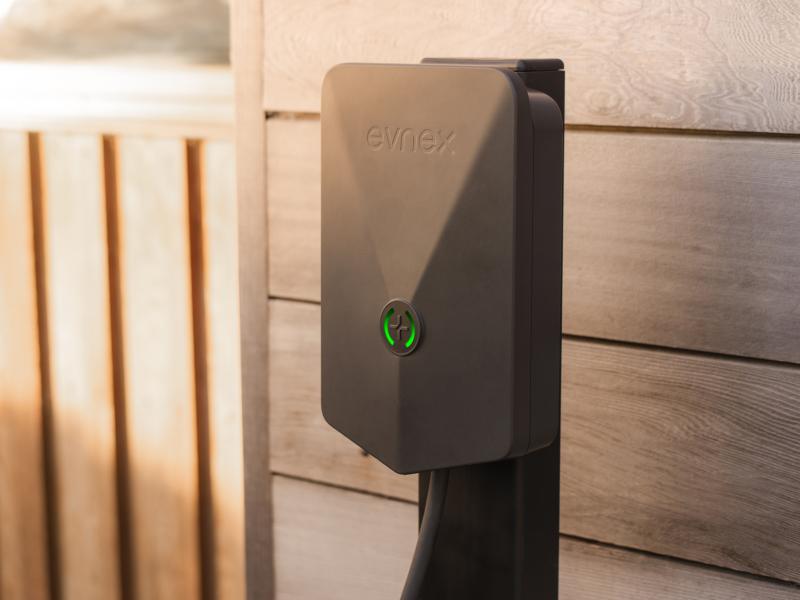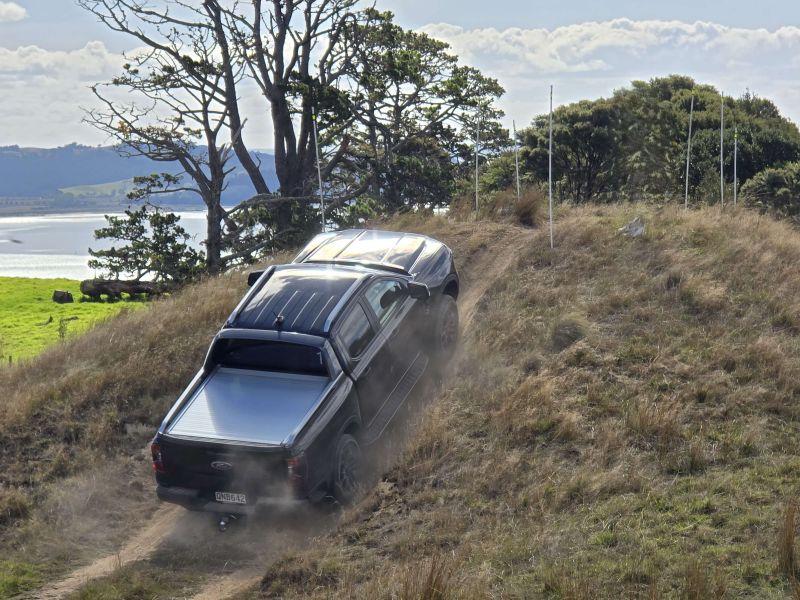There are, of course, many contenders in the small van market, and it would take most of the magazine to compare them all. We have therefore, gone with the gastronomic trend of providing a tasty trio of tempters: with the Ford Transit Custom, LDV’s G10 and the Renault Trafic.
Of these, the Ford would likely be considered the most traditional, with the Renault being a little Left Bank. The G10, being an LDV, is the new kid on the block with quite a bit to prove.
Even our comparatively simple sample demonstrated the diversity in modern cargo haulers, and what we thought would be a simple case of one, two, three – yes folks, we have a winner; didn’t quite pan out that way.
Our testing panel of Sean, Ross and Trevor had very clear ideas about what they were looking for in terms of specification, ease of loading and how well the vehicles coped with various city environments.
Instead, each van was assessed on its independent attributes and – for lack of a better expression – gut feeling, on how they performed from the perspective of each driver.
When it came to which was the best van of the three, well, it wasn’t easy to pick, because unlike other comparisons where there is often a clear winner, in this case each van resonated especially with one driver, and for different reasons.
There was a significant variance in price between our three contenders, the Ford topping the tree at $54,990, the Renault coming in just under this at $49,990 and the LDV representing the lowest hanging fruit at $32,990+gst.
If we were analysing on price alone, the LDV would take the title, but for our purposes, price was not the only consideration.
Specification was a big one for our testers, and here, there was one clear standout: the Ford Transit. This is the van with the most fruit, as evidenced by the alphabet soup of safety features, which far overshadowed the competition.
As well, the Transit gains an array of specification items which sets it apart: the facility for Apple Carplay or Android Auto through the SYNC3 connectivity platform, which incorporates satellite navigation as well as the ubiquitous rear-view camera, adaptive cruise control, voice command functionality, trailer sway mitigation and heated seats.
In terms of loadspace, it was an almost even contest, the Ford and Renault boasting a six cubic metre cargo bay with the LDV falling a shade short at 5.2 cubes. All however, sported multiple load points and internal floor and wall coverings.
Access was via dual side sliding doors, with the Renault sporting glazed doors and rear panels as standard, as opposed to the standard blind panels of the Ford and the LDV. Rear door access for the Renault and the Ford was afforded by barn-style doors with 180-degree opening in the case of the Ford and 270-degrees for the Renault. The LDV came to us with a lifting tailgate arrangement.
Bulkheads were found in all vans, though the Ford and Renault demonstrated a little more sophistication over the LDV, with through-bulkhead access to accommodate longer loads.
Renault took line honours here however, as the longer load carrying ability extended further, under the left-hand passenger’s seat, utilising the cabin space through to the firewall.
Payloads varied, with the Ford claiming 767kg, the LDV lugging 1093kg and the Renault again, scoring top marks with its 1274kg payload.
As far as engines, power and torque are concerned, the Ford was a clear winner with a two-litre turbodiesel putting out 125kW of power and 405Nm of torque down to the front end and claiming 7.2 litres per 100km.
Next up was the LDV with its 1.9-litre turbo diesel throwing down 106kW and 350Nm, this time to the rear wheels, with a conservative 8.3 litres per 100km fuel figure. As to the Renault Trafic, a 1.6-litre twin turbo punched out 103kW and 340Nm again to the front wheels, but for an impressive fuel consumption figure (attained) of 6.2 litres per 100km.
Part of this could be attributed to the Renault’s slick six-speed manual, where the other two ran the more congestion-friendly, six speed auto boxes.
And so, we come to the drive impressions and our preferred pick per driver.
Sean’s opinion came first. The pick of the pack? The Renault Trafic.
The Renault resonated with the ‘round-headed one’ for its quiet running, fuel economy, startling performance and seemingly slightly larger apertures for side loading. Had the Trafic not been kitted out with the roof-mounted conduit carrying bazooka and ladder holder, Sean would also have given it the Whisper award.
Renault’s manual transmission will not find favour with everyone, but its engagement was smooth and mis-shift free. While the interior was not as technologically advanced as the other two, the all-day van user convenience features blitzed the opposition and the low rider look of the Trafic will appeal to the boy racing badass in every red-blooded, stick-shifting driver.
Trev’s choice was the LDV. Easier to drive than many cars, according to the daily driver of a contemporary sedan, Trev gave the G10 top marks for its combination of familiarity and practicality.
Trev took a shine to the smooth power and solid torque afforded by the LDV’s robust powerplant, and while the Transit has greater tarmac tearing ability on paper Trev felt, the LDV’s delivery of the torque was superior and more easily discerned.
“The LDV is an honest, working van,” explained Trev. “It’s not overly burdened by tricky tech which tries to convince the driver that he or she is in a slightly larger car with all the bells and whistles. The G10 has enough van kit onboard to be immensely useful, but it has an inherent car feel, which the others have to work hard to convince you of.”
LDV’s auto came in for positive comment, as did the clarity of the rear camera on the seven-inch display.
This meant Ross was the Blue Oval’s champion – or is that the other way ‘round? Remembering that Ross has a peculiar obsession with drift-car racing, the appeal of the Transit’s 125kW and rubber laying 405Nm torque figure, albeit through the front wheels, was always going to hit a high note with our resident DK (Drift King).
The Transit my pick? Sure, I’ll go with that Sean. It was certainly the one I gravitated to when the time came to head home and I needed wheels. Though ironically, it was the Renault I plumbed for (longer wheelbase) when it came to moving some body parts (don’t worry, they were bits of a Skyline I’ve just ‘split’ to repair my smacked-up drifter) from Whenuapai to my lock-up in Henderson. And in a weak moment I admitted to Sean that I actually quite enjoyed the billy basic no-BS ‘charm’ (if that’s the right word when you are talking about a van) of the LDV.
In saying (all) that if I was back driving a van regularly (as I was several years ago now) and I had some say in the purchasing decision, I’d go for a Transit Custom every time.
Back in the day, when I drove a big, blue ex-DTR high roof Transit nick-named Betty Blue, it had a great engine, a decent enough driver’s ‘chair,’ bare-bones interior and a body that pretty-much shook itself to bits in the five or so years I had anything to do with it. Sophisticated it was not.
But that was what vans were like back then.
Now – thank goodness – they could not be more different.
Climb up and into the short wheelbase Custom model we got to try and the look, feel and even the ergonomics are – if not quite ‘car-like’ – at least on a par with the current market darling of the Ford range, the XLT-spec Ranger ute.
Sean made much of the punchy turbo-diesel engine’s serious power and torque figures, and fair play to him, the Custom was a pleasure to drive because of it.
What I most liked about it, however, was the all-day comfort of the driver’s perch, and – once I became accustomed to not really being able to see enough through the interior rear-view mirror – quickly coming to use, and perhaps more importantly trust, the combination of excellent reversing camera (which proved particularly good in low light situations) and two-level, plain top/fisheye bottom door mirrors.
With room for both a takeaway coffee cup (top right corner of dash above driver’s side air vent) and a water bottle (door trim), plus a flat floor so you can, should you ever need to, slide across the centre and passenger seats and exit via the left-hand side door, plenty of time and thought has obviously gone into designing a cockpit that works as long and as hard as the driver is expected to.
Add twin sliding side doors plus the twin 180 degree opening ‘barn’ doors at the back and you have a van which can not only carry but also tick all the boxes!
“If you think you know what one of these new-generation Transits is like because you – or worse, a ‘mate’ – drove one ‘back in the day,” says Ross, “think again. These new-generation models feel like they came from the same design team and off the same production line as a Mondeo or Focus. And that, if you are aware of the huge strides Ford has made with its passenger cars over the past five to ten years, is saying something!”
For those who were expecting a clear-cut winner this time round, we’re sorry to disappoint, but this was not a clear-cut comparison by any means. It’s very unusual to find such diversity from three drivers of three vehicles.
The takeaway from all of this is, in terms of the contemporary selection of light commercials when it comes to finding the right van for the right job, the fleet buyer would do well to consider the driver’s input as a critical part of the final analysis.






